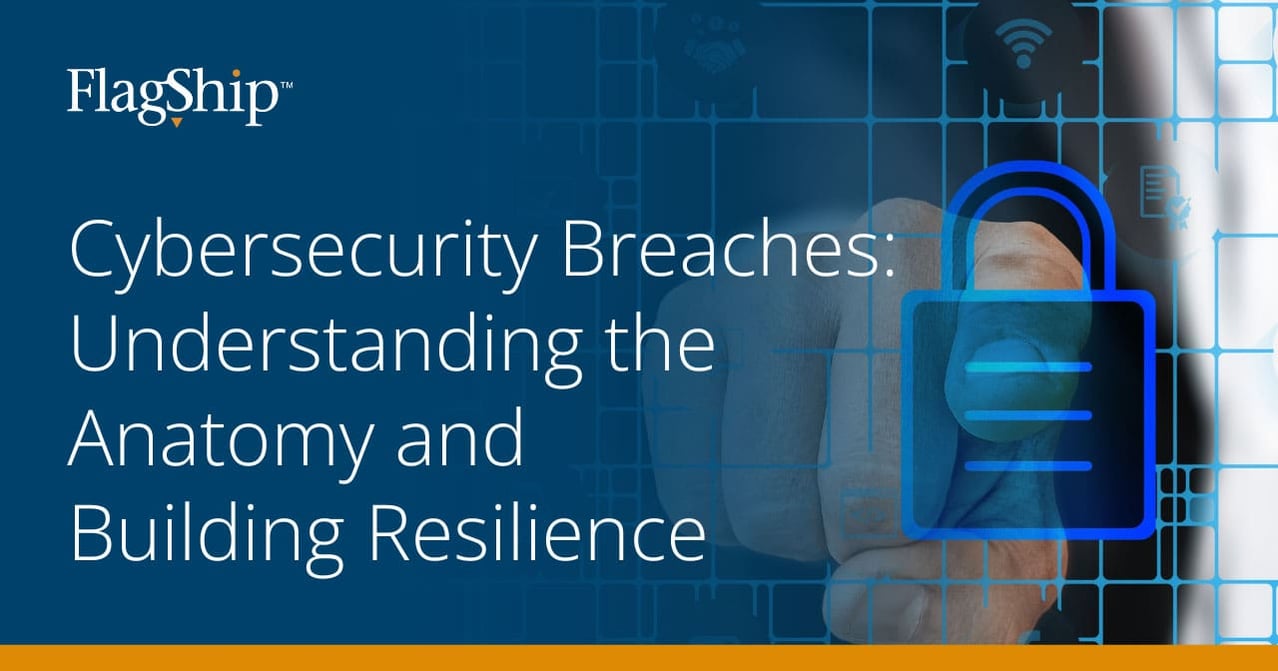
Many organizations assume cybersecurity breaches are problems reserved for big corporations. That perception often changes only after they experience one firsthand.
A breach rarely begins with a dramatic hack. It often starts with small vulnerabilities: an employee clicking on a phishing email, a contractor logging in from an unsecured device, or a delayed software update that leaves a known weakness exposed. From there, the damage escalates, leading to unauthorized access, stolen data, operational shutdowns, financial losses, and reputational harm.
Today’s cyber threats are highly organized and often automated, making them harder to catch. Small and mid-sized businesses are frequent targets because attackers recognize that many lack the safeguards or layers of protection larger companies have in place. Understanding how breaches unfold helps organizations strengthen defenses before they experience a crisis.
Stage 1: The Entry Point
Most breaches begin with human error or neglected basics rather than advanced technical attacks.
Common entry points include:
- Phishing emails containing malicious links or attachments

- Weak or reused passwords
- Unpatched software vulnerabilities
- Insecure remote access tools such as VPN or RDP
- Personal devices connecting to company networks
Human error remains a leading cause of data breaches. The 2025 Verizon Data Breach Investigations Report indicates that 60 percent of breaches involve the human element through error, manipulation, or malicious misuse. Once attackers gain access, they typically do not act immediately. They take time to explore systems and identify paths to valuable data.
Client Spotlight
See how a CPA firm turned a crippling cyber incident into long-term resilience with Flagship’s support: IT Overhaul: How Flagship Rescued a CPA Firm from the Brink of Disaster
Stage 2: Escalation and Lateral Movement
After gaining initial entry, attackers work to expand their reach. They look for ways to gain higher-level access and navigate through different systems without being noticed.
During this stage, attackers may:
- Collect and reuse credentials
- Disable security alerts
- Install malware to maintain persistence
- Create backdoors for future access
This process can continue for weeks or even months. The longer attackers remain undetected, the greater the eventual damage.
Stage 3: Exploitation
This is the stage where the intrusion becomes visible. Attackers use the access they've established to cause disruption and extract value.
Common outcomes include:
- Encryption or deletion of critical files

- Shutdown of servers or essential systems
- Theft of sensitive customer, financial, or proprietary data
- Ransom or extortion demands
- Public awareness of the breach through customers or employees
At this point, the organization is often forced to respond under pressure. Without a prepared incident response plan, decision-making can be slow, inconsistent, or even harmful.
Stage 4: The aftermath
Even after systems are restored, the impact of a breach can linger for months or even years. Downtime often translates into missed revenue and stalled operations, diminishing the client's trust in the company and its leadership. In regulated industries, the aftermath can extend even further, with investigations, audits, and heightened scrutiny.
Long-term impacts:
- Loss of customer or investor confidence
- Increased security and compliance scrutiny
- Resource drain on IT and legal teams
- Required audits and documentation
- Insurance claims and legal disputes
For many organizations, cybersecurity does not become a true priority until they reach this stage. By then, the damage is already in motion, and the path to recovery is long and expensive.
Client Spotlight
Discover how Flagship's comprehensive IT solutions aided groundbreaking cell therapy research: Supporting Cell Therapy Research with Strategic I.T. Solutions
Building Resilience
Cybersecurity breaches are preventable. Their risk and impact can be significantly reduced with a proactive approach. Key steps include:
Here’s what changes the outcome:
-
Proactive Threat Detection
Modern attackers don’t trip obvious alarms. You need tools that detect unusual behavior, not just known malware signatures. Behavioral analytics, endpoint detection and response (EDR), and 24/7 system monitoring are critical.

-
Strong Identity and Access Management
Multifactor authentication (MFA), secure password policies, and least-privilege access rules dramatically reduce the attack surface. If an attacker can’t move laterally, they can’t do as much damage.
-
Timely Patching and Vulnerability Management
Most exploited vulnerabilities are known, with patches available. But they go unpatched due to bandwidth issues or process gaps.
-
Regular Backups and Tested Recovery Plans
Having backups isn’t enough. You need to know they work and that you can restore operations fast.
-
Employee Awareness Training
People are your first line of defense (and the most common breach vector). Regular, practical training reduces risky clicks and credential leaks.
Cybersecurity is no longer optional. It’s foundational. Every business, regardless of size or industry, is now operating in a digital threat landscape.
Strengthening cybersecurity doesn't have to be overwhelming. With Flagship’s managed IT services, you gain proactive monitoring, timely patching, and expert support designed to reduce risk and keep your business resilient.
Let us help you shift from reactive to prepared, so you can focus on running your organization with confidence.





Leave a Comment